breast cancer symptoms
Breast Cancer:Understanding Breast Cancer Warning Signs, Causes. Treatement and Early Detection
What is breast cancer? Breast cancer is when the breast cells start multiplying excessively due to changes known as mutations in the cell growth regulatory genes. This mutation lets the cells divide and multiply uncontrollably. Typically, the first signs of breast cancer may form in the lobules or ducts of the breasts. Lobules are the glands that produce milk, and ducts are the pathway that carries the milk from the glands to the nipples. Cancer can also grow in the breast's fatty or fibrous connective tissue. These cancer cells can often invade healthy breast tissue and travel to lymph nodes under the arms. Who is mainly affected by breast cancer? Those whose mother, daughter, or sister (first-degree relatives) have had breast cancer are at higher risk of developing the disease. Having a first-degree male relative increases the risk of developing this condition. The presence of specific inherited genes, such as BRCA1 and BRCA2, also increases the risk of developing breast cancer. What age does breast cancer occur? The risk of developing signs of breast cancer increases with age. 20-year-olds have a 0.06% chance of getting breast cancer in the next decade, by age 70, it becomes 3.84%. What race is most affected by breast cancer? According to the Centers for Disease Control and Prevention (CDC), the mortality rate due to breast cancer is 40% higher among black women. It was also found that African-American women were more likely to develop severe breast cancer than other races. Low socioeconomic status makes it difficult for these women to get good quality health insurance and medical services, causing these individuals to get breast cancer diagnosis at later stages. How common is breast cancer? With 27.7% of all cancers detected in India, breast cancer is the most common. One woman is diagnosed with breast cancer every 4 minutes. What are the types of breast cancer? Numerous types of breast cancer can be divided into two main categories. Non-invasive breast cancer, also called breast cancer in situ, does not spread from the original tissue. Invasive breast cancer can move from the ducts or glands to other body parts. Common types of breast cancer Ductal Carcinoma in situ: The cancer cells are present within the ducts of the breast. Lobular Carcinoma in situ: The cancer cells grow in the milk-producing glands Invasive ductal carcinoma: Cancer begins in the milk ducts and moves to the nearby breast tissue. This is the most common kind of breast cancer. Invasive lobular carcinoma first develops in the breast's lobules before moving to nearby tissue. Less common cancers include Paget disease of the nipple: The cancer begins in the nipples and slowly starts infecting the skin and areola of the nipples. Phyllodes tumor: A rare kind of breast cancer that forms in the breast's connective tissue. Angiosarcoma: It grows in the blood vessels and lymph vessels in the breast. Inflammatory breast cancer: This is a rare but aggressive form of cancer in which the cells block the lymph nodes near the breasts so the lymph vessels cannot drain properly. Triple-negative breast cancer: The cancer needs to have the following characteristics to be diagnosed as triple-negative breast cancer: lacks estrogen receptors lacks progesterone receptors The surface doesn't have additional human epidermal growth factor receptor 3 (HER) proteins. What are the early signs of breast cancer? The signs and symptoms of breast cancer can vary from person to person. These possible signs of breast cancer include Changes in the shape, size, or contour of the breasts A small lump or mass that could feel like a small pea in the breast A thickening or lump inside or near the breasts or near your underarms that persists through your menstrual cycle. Any change like dimpling, scaliness, inflammation, or skin puckering on your nipple or breasts. Redness on the breast skin One area of the breast that is distinctly different from other regions A clear or blood-stained discharge from the nipple A marble-like hardened area under the skin Most people do not recognize the early symptoms of breast cancer, so it is essential to get regular mammograms, especially if you have a family history of breast cancer. What causes breast cancer? While the exact cause of breast cancer is unknown, several risk factors can increase your chances of developing this disease. Age: Being 55 or older could increase your risk of developing cancer. Sex: Females are more likely to develop breast cancer. Genetics and family history: If you have a parent or sibling who has breast cancer, you are more likely at risk of it too. Research shows that 5-10% of breast cancers are due to single abnormal genes passed down from parents to children. Smoking: The use of tobacco use is linked to several cancers, including breast cancer. Alcohol: Like smoking, alcohol use can also put you at risk of developing breast cancer. Obesity: Obesity not only puts you at risk of developing cancer but can also cause the recurrence of breast cancer symptoms. Radiation exposure: Prior radiation therapy, especially on your head, and neck can put you at risk of developing breast cancer. Hormone replacement therapy: People who use this therapy are more at risk of showing early symptoms of breast cancer. Along with these, other factors include the chances of showing breast cancer symptoms, which is why you need to talk to your healthcare provider if you find out you may be at risk of developing breast cancer. How is breast cancer diagnosed? A physical examination will help recognise the first signs of breast cancer, after which your healthcare provider will take a look at your medical and family history and suggest a set of diagnostic tests, including Mammogram: This is a special X-ray image that can detect abnormal growths or changes in your breasts. Ultrasonography: Here, sound waves are used to image the inside of your breast. This helps diagnose abnormalities and breast lumps. Positron emission tomography (PET) scanning: This test uses specialised dyes to highlight any areas that may be suspicious. Magnetic resonance imaging (MRI): With the help of radio and magnetic waves, a detailed, clear image of the structure of your breast is formed. If the imaging tests indicate anything suspicious, your healthcare provider would need you to get a biopsy of your breast tissue so they may take a sample that is then sent to a diagnostic lab. What are the stages of breast cancer? Clearly defining the breast cancer stages helps healthcare providers and patients understand how much cancer is present in the body. The size, location, and other factors like whether or not the cancer has spread to other parts of the body help determine the stage. Stage 0: This is when the early symptoms of breast cancer appear, and the disease is still non-invasive, which means it hasn't broken out of the breast ducts. Stage I: Here, the cancerous cells have moved to the breast tissue nearby. Stage II: At this stage, the tumour is 2 cm or smaller in diameter and has spread to the lymph nodes, or is larger than 5 cm but is still contained in the area of origin. Stage III: Here, the cancer may have spread far beyond the origin point and invaded the lymph nodes and tissues nearby but has not reached distant organs. Your doctor may refer to this as locally advanced breast cancer. Stage IV: This is the last stage, also known as metastatic breast cancer, where the cancer may have spread to areas like the bones, brains, lungs, and liver that are far away from where the signs of breast cancer appeared. How is breast cancer treated? Choosing the right kind of breast cancer treatment for you may depend on several factors, such as the location and size of the tumor and whether or not it has traveled to other places in the body. You need to get together with your healthcare provider and come up with a treatment plan that works best for your unique needs. Sometimes, you may even need a combination of the following treatments for better results. 1. Breast cancer surgery Removing the cancerous part of the breast and a small area of normal tissue around the tumour is one of the most effective ways of dealing with breast cancer symptoms. Different situations may call for different types of surgery including: Lumpectomy Mastectomy Sentinal node biopsy Axillary lymph node dissection Modified radical mastectomy Radical mastectomy 2. Chemotherapy for breast cancer Chemotherapy may be suggested before a lumpectomy to shrink the size of the tumour. It can also be used after surgery to kill any persistent cancer cells and reduce the risk of the cancer spreading to other parts of the body. If your breast cancer symptoms have already spread to other parts of your body, this may also be the primary form of treatment you must undergo. 3. Radiation therapy for breast cancer This is another treatment used to kill any remaining cancerous cells after surgery. It can also be used to treat metastatic tumours that may be causing complications and pain. 4. Hormone therapy for breast cancer Some types of breast cancers need hormones like progesterone and estrogen to grow. With this treatment, these levels are lowered or stopped from attaching to the breast cancer cells. This is often used after breast cancer surgery to reduce the risk of recurrence. 5. Immunotherapy for breast cancer This breast cancer treatment uses your body's immune system to target and attack the cancerous cells. This is usually an intravenous treatment and can be combined with chemotherapy. 6. Targeted drug therapy for breast cancer Targeted drug therapy is used when the breast cancer has travelled to other body parts. The commonly used drugs include monoclonal antibodies, antibody-drug conjugates, and kinase inhibitors. Conclusion As more and more people around the world have become increasingly aware of breast cancer symptoms and getting the required treatment on time the survival rate has started to get better. Preventive medical tests also help you catch other forms of diseases earlier which makes treatment more effective. Diagnostic centers like Metropolis Labs offer gender and age-specific packages that check for most diseases helping you get a headstart on living a healthy life.
Breast Cancer: Early Warning Signs You Must be Aware of
Breast cancer happens to be the most common cancer among women globally. Though it may affect both men and women, breast cancer is more common in women. According to the epidemiological studies, the global burden of BC is expected to cross almost 2 million by the year 2030[2]. Even in India, the newly reported cases of breast cancer have significantly increased. Despite multiple campaigns and efforts by the Government and private organizations, the awareness around breast cancer remains low, especially in sub-urban and rural India. It is critical to understand that cancer can be defeated if diagnosed at early stages. Take a look at some of the early symptoms of breast cancer Mutations in BRCA1 and BRCA2 genes are associated with breast cancer. A BRCA 1 and 2 profile test is ordered in Individuals with a strong history of breast or ovarian cancer. Early Symptoms of Breast Cancer: The most common symptoms of breast cancer include: Changes on breast skin, such as swelling, redness, or other visible differences in one or both breasts A lump or a mass or nodes felt on or inside of the breast or armpit An increase in size or change in shape of the breast(s) (not linked with puberty in young girls) Discharge other than breast milk from nipples Pain or ulceration in/on any part of the breast Inward pulling of the nipple or pain in the nipple area Not all women with breast cancer experience the same symptoms. They can vary to some extent from person to person. A study has reported that women aging above 40 with high cholesterol were 45% less likely to develop breast cancer than those without high cholesterol. Track your cholesterol levels from time to time. Early Detection Saves Lives It is common for women to ignore a doctor visit owing to the privacy concerns and stigmas associated. Do not hesitate to consult a doctor if you notice any early warning sign. What Can Put You at Risk of Breast Cancer? Risk factors that cannot be changed (non-modifiable risk factors) Advancing age: Most breast cancers are diagnosed after age 50. The risk for breast cancer increases as a woman gets older. Reproductive history: If a woman got periods before age 12 and had menopause after age 55, this exposes her to hormones for a longer period, that can increase the risk of getting breast cancer. Dense breasts: Women with dense breasts are more likely to get breast cancer. Family history of breast or ovarian cancer: The risk of getting breast cancer for a woman goes up if her first-degree relative (mother, sister, or daughter) has breast or ovarian cancer. Risk Factors that can be controlled (modifiable risk factors) Sedentary lifestyle: Women who are not physically active have a higher chance of getting breast cancer. Being overweight: Unhealthy weight or obesity increases women's risk of getting breast cancer than those who have maintained a normal weight. Reproductive history: Having the first pregnancy after age 30 and not breastfeeding can raise breast cancer risk. Alcohol consumption and smoking: Several studies have shown that drinking alcohol and/ or smoking increase a woman’s risk for breast cancer. Tips to Cut Down The Risk of Breast Cancer Get involved in physical activity. Exercise regularly Maintain a healthy weight Limit alcoholic drinks and quit smoking, one step at a time If you have a family history of breast cancer or inherited changes in your BRCA1 and BRCA2 genes, talk to your doctor about other ways to lower your risk. A simple habit to keep yourself safe from breast cancer A breast self-exam is a simple check-up which women can do at home to look for changes or problems in their breast. This method requires a woman to look at herself and feel each breast for possible lumps, distortions or swelling. Here is How You Can Perform Self-Breast Examination: Step 1 Undress from the waist up and stand straight with your hands on your waist in front of a large mirror in a well lighted room. Take your time and observe your breasts. Look for any changes in shape, size or position, or any change in skin around it. Check if there is any puckering, dimpling, sores or discoloration. they might not be equal in size or shape and that’s perfectly okay. If you notice any change, bulging of the skin, visible distortion or swelling, you should bring it to the notice of your doctor. Check your nipples, examine them carefully for any sores, peeling or change in their direction- a nipple that has changed position or has redness, rash or swelling. Step 2 Raise your arms high and look for the same changes in the mirror. See if there is any sign of fluid coming out of any nipple, it can be watery, milky or yellowish fluid or even blood. Step 3 Lie down on a bed and then touch your left breast with your right hand and vice versa. With the fingertip pads of your hand check your breast using a firm smooth circular motion. Examine the entire breast from top to bottom, side to side- from your collar bone to the top of your abdomen, from your armpit to your cleavage. Follow a pattern so as to cover the whole breast area. Start from the nipple, moving in larger and larger circles until you reach the outer edge of the breast. Or as more women prefer, you can also move your finger pads up and down vertically, in rows like while you are mowing a lawn. Be sure to check all the tissues from the front to the back of your breast Step 4 Feel your breasts while standing or sitting. Cover your entire breast, using the same movements described in the previous step. Do not panic if you feel a lump or something unusual while you are self-examining yourself. There can be a number of causes behind the changes, not just cancer. It might be due to hormonal changes, a benign breast condition or an injury. Consult a doctor and clear any doubts. Breast Cancer Screening One should not depend only on self-exam to rule out cancer. No single test can detect all breast cancer early but breast cancer organizations believe that performing a breast self-exam along with other screening methods can increase the odds of early detection. Regular physical examination by a doctor, mammography and if necessary ultrasound or MRI; all or any might be needed. Apart from breast self-examination, certain imaging tests can help learn more about your breasts and detect any disease even before it gives symptoms: Mammogram. This detailed X-ray gives doctors a better view of lumps and other problems. Magnetic resonance imaging (MRI). This body scan helps create detailed images of the insides of your breasts. Biopsy. For this test, the doctor removes tissue or fluid from your breast and looks at it under a microscope to check for cancer cells and, if they’re there, learn which type they are. Common procedures include: Fine-needle aspiration Core-needle biopsy Surgical (open) biopsy Lymph node biopsy Image-guided biopsy Remember, breast cancer can be treated. The key to treatment is early detection and timely adequate care. Just take care of yourself and stay aware of warning signs.
When Should You Get a Mammogram for Breast Examination
What is a mammogram? A mammogram is an X-ray of the breast used by doctors as a screening tool for breast cancer and to detect abnormalities in breast tissue. A mammogram is considered a useful test to identify breast cancer early, even before symptoms develop. In a few cases up to three years before they can be felt or detected. This is called a screening mammogram. While a diagnostic mammogram is advised by a healthcare professional in case you develop any new symptom, such as a lump, pain, nipple discharge or breast skin changes. Breast cancer is the most prevalent cancer worldwide and is one of the leading causes of death in women. Although treatment approaches for breast cancer continue to improve, early diagnosis with the help of screening mammograms has significantly reduced the cancer-related deaths and impacted the survival rates of these patients. Please note that not all breast lumps are breast cancers. Your doctor can ask for specific tests to differentiate between a cancerous and a noncancerous mass. Why is a screening mammogram different from a diagnostic mammogram? A screening mammogram is a routine, in most cases done annually to check for signs of breast tissue abnormalities before you have symptoms. It typically includes at least two pictures of each breast taken at different angles, from top to bottom and from side to side. However, you can undergo a diagnostic mammogram if your screening mammogram detects an abnormal tissue in your breast. It includes extra views and utilizes additional imaging techniques which are supervised by the radiologist at the time of the study. Who all should undergo a mammogram? Various organizations such as American College of Obstetricians and the American College of Radiology, recommend an annual screening mammogram, starting at age of 40 years for all women with an average risk of developing breast cancer. The American Cancer Society recommends the following: Women with age 40 to 44 years should have the option to start annual breast cancer screening with mammograms. Women with age 45 to 54 years should undergo mammograms every year. Women who are 55 and older can choose to get mammograms every 2 years, or can continue yearly screening. Screening mammograms should be continued if a woman is in good health and is expected to live 10 more years or longer. All women should be aware with the benefits, limitations, and potential harms associated with breast cancer screening. Occasionally, males who are at high-risk of developing breast cancer because of their family history may also get screening mammography. However, about 1 out of 100 males develop breast cancer. Besides, your healthcare provider may ask you to take annual screening mammograms if you have any of the following risk factors: Family history of breast or ovarian cancer Personal history of breast cancer Inherited genetic mutations Certain noncancerous breast diseases such as atypical ductal hyperplasia or lobular neoplasia Dense breasts. How is a mammogram done? A mammogram is a special X-ray designed to check only breast tissues. You will stand in front of the machine and a technician will place your breast on a plastic plate Another plate, known as paddle will firmly press your breast from above which will flatten it, you might feel some pressure at this moment These two plates will hold the breast still while the X-ray is being taken The machine creates X-rays that pass through your breast to a detector located on the opposite side The detector transmits electronic signals to a computer to form a digital image These steps are repeated to capture side views of the breast for both breasts. How can you prepare yourself for a mammogram? Although getting a mammogram is not usually an uncomfortable procedure for most women, it takes only a few moments and any discomfort, if present gets over soon. You will be required to remove all clothing and jewellery from your waist up for the imaging procedure. Points to consider while scheduling your appointment for mammogram: If you have been recently vaccinated for COVID-19, and are due for a mammogram, ask your healthcare provider for how long you should wait after vaccination to get your mammogram done Avoid scheduling your mammogram the week before you get your period or during your period as your breasts may be tender during this time, which could make it uncomfortable Try to inform your doctor if you are breastfeeding, pregnant or suspected to be pregnant If you have breast implants, do not forget to mention it to your healthcare provider. There are certain guidelines that you are required to follow on the day of your mammogram: Follow your normal routine including regular medicines You should remember to not apply the following substances as they can appear as white spots on the image and will interfere with the accuracy of mammogram: Deodorants Body powders Perfumes Ointments or creams on your breasts or underarms. How safe are mammograms? Although mammograms expose your breasts to small amounts of radiation, its benefits outweigh any potential harm from the radiation exposure. Do you feel pain during mammograms? A mammogram experience can be different for different people. The level of discomfort that you feel depends on the following factors, such as: The size and density of your breasts The compression your breasts need while capturing the image If you are having or about to get on your period as your breasts may be more tender and sensitive to compression The skill of the radiology technician You will feel less discomfort if you are relaxed and position yourself in the best way for good images. What does the result of mammogram signify? If your mammogram is normal, continue to get mammograms according to recommended time intervals. Screening mammograms are most beneficial when a radiologist can compare them to your previous mammograms to analyse the changes in your breasts. If your mammogram is abnormal, and shows one or more suspicious regions, it does not necessarily mean that you have cancer. You will be advised to undergo additional mammogram views, other imaging tests including a breast ultrasound, or a breast biopsy. In nutshell, mammography is a fast and safe procedure. A mammogram can save your life as early detection of breast cancer reduces your risk of dying from the disease by 25-30% or more. Consult your doctor about your need for mammograms, so you can make sure to start screening as early as possible. When did you have your last health check up? Book one now.
Doctor’s Diary: How to Do a Breast Self-Exam for Breast Cancer?
In 2020, there were 2.3 million women diagnosed with breast cancer and 685,000 deaths worldwide. What is more worrisome is that the incidence is alarmingly increasing globally. After skin cancer, breast cancer has been cited as the most common cancer diagnosed in women across the world. Breast cancer can occur in both men and women, but it's far more common in women. Women are better multitaskers than men, say studies. However, “the multitasker” needs to take care of her health too. Book a TruHealth Package today- specially designed for women. Breast cancer awareness: The need of the hour Breast cancer can begin in different parts of the breast. A breast is made up of three main parts: lobules, ducts, and connective tissue. The lobules are the glands that produce milk. The ducts are tubes that carry milk to the nipple. The connective tissue (which consists of fibrous and fatty tissue) surrounds and holds everything together. Most breast cancers begin in the ducts or lobules. Breast cancer can spread outside the breast through blood vessels and lymph vessels. When breast cancer spreads to other parts of the body, it is said to have metastasized. Breast cancer symptoms Though the symptoms can vary to some extent from person to person, and not all women experience all the symptoms, the most common symptoms of breast cancer include: Skin changes, such as swelling, redness, or other visible differences in one or both breasts A lump or an increase in size or change in shape of the breast(s) Discharge other than breast milk from nipples Pain or ulceration in/on any part of the breast along with lumps or nodes felt on orinside of the breast A study has reported that women aging above 40 with high cholesterol were 45% less likely to develop breast cancer than those without high cholesterol. Track your cholesterol levels from time to time. What can you do to keep yourself safe from breast cancer? A breast self-exam is a simple check-up which women can do at home to look for changes or problems in their breast. This method requires a woman to look at herself and feel each breast for possible lumps, distortions or swelling. With medical awareness being what it is today, many women around the world feel that doing this is important for their health. When to do a breast self-exam? The best time to do a breast self-exam is about 3 to 5 days after your period starts as breasts are not as tender or lumpy at this time of your monthly cycle. If you are pregnant, never had a period, no longer have periods or your period cycle is irregular, choose a specific day each month to perform your self-check. After menopause, try to do this on the same day every month. To prepare for your breast self-test, you can ask your doctor for a demonstration or seek support following the below given steps. Steps to be followed while doing a breast self-examination Step 1 Undress from the waist up and stand straight with your hands on your waist in front of a large mirror in a well lighted room. Observe your breasts; they might not be equal in size or shape and that’s perfectly okay. For most women that’s the case. Take your time and look for any changes in shape, size or position, or any change in skin around it. Check if there is any puckering, dimpling, sores or discoloration. The first time you do this, you might not notice anything but with regular examination you will soon know if there are any changes. If you notice any change, bulging of the skin, visible distortion or swelling, you should bring it to the notice of your doctor. Check your nipples, examine them carefully for any sores, peeling or change in their direction- a nipple that has changed position or has redness, rash or swelling. Strep 2 Raise your arms high and look for the same changes in the mirror. See if there is any sign of fluid coming out of any nipple, it can be watery, milky or yellowish fluid or even blood. Step 3 Lie down on a bed and then touch your left breast with your right hand and vice versa. With the fingertip pads of your hand check your breast using a firm smooth circular motion. Examine the entire breast from top to bottom, side to side- from your collar bone to the top of your abdomen, from your armpit to your cleavage. Follow a pattern so as to cover the whole breast area. Start from the nipple, moving in larger and larger circles until you reach the outer edge of the breast. Or as more women prefer, you can also move your finger pads up and down vertically, in rows like while you are mowing a lawn. Be sure to check all the tissues from the front to the back of your breast. Step 4 Now feel your breasts while standing or sitting. You can even do this while your skin is wet and slippery in the shower. It’s a fact that many women prefer doing it in the shower. Cover your entire breast, using the same movements described in the previous step. When you are self-examining yourself, do not panic if you feel a lump in your breast or other breast changes. There can be a number of causes behind this. It might be due to hormonal changes, a benign breast condition or an injury. On first self-examination many women might find lumps or lumpy areas in their breast but these are common amongst most women and they are not all cancerous. Moreover, many times, changes and lumps disappear automatically over a period of time. But if it persists for a long duration it’s better to consult a doctor and clear any doubts. The more you examine your breasts the more you learn about them And the easier it becomes for you to find any changes in them. Breast awareness is sometimes considered as an informal alternative to breast self-examination. Form a habit of doing a self-examination once a month so that you become familiar with how your breasts normally feel and look. Your goal is to get used to the feel of your breasts which will help you to detect any changes in them over a period of time. There are many conditions that can cause changes in your breast, cancer alone might not be the reason. But if you become familiar with your breast type, then it significantly increases the chances of discovering any lump formation or changes which might be the first sign of breast cancer. Breast Cancer screening It is believed that regularly examining your breasts on your own can be an important way to detect cancer early and get proper treatment. But at the same time one should not depend only on self-exam to rule out cancer. No single test can detect all breast cancer early but breast cancer organisations believe that performing a breast self-exam along with other screening methods can increase the odds of early detection. Regular physical examination by a doctor, mammography and if necessary ultrasound or MRI; all or any might be needed. Apart from breast self-examination, your doctor might do a breast exam and refer to certain imaging tests to learn more about your breast. Mammogram. This detailed X-ray gives doctors a better view of lumps and other problems. Magnetic resonance imaging (MRI). This body scan helps create detailed images of the insides of your breasts. Biopsy. For this test, the doctor removes tissue or fluid from your breast and looks at it under a microscope to check for cancer cells and, if they’re there, learn which type they are. Common procedures include: Fine-needle aspiration Core-needle biopsy Surgical (open) biopsy Lymph node biopsy Image-guided biopsy BottomlineBreast self-exam is the most convenient no-cost tool that one can use regularly anytime and at any age. It is recommended that all women who are at an average risk or have a family history of cancer, perform breast self-exam as part of their overall breast cancer screening strategy.
Breast Health: Recognizing Lumps, Changes, and Common Problems
Women of any age group may encounter any of these abnormal changes in their breasts. Yes, if you find any of these unusual signs in you, it can be scary. But one must refrain from panicking and must consult doctor immediately so that appropriate testing and treatment (if needed) can be carried out. Flat or inverted Nipples Some women naturally have flat or inverted nipples. Check yourself for flat or inverted nipples by placing your thumb above and finger below your breast on the edge of areola and gently pressing your areola. The nipple should protrude or stick out. If it flattens or indents, you have a flat or inverted nipple. Women with inverted or flat nipples may encounter some difficulties during breastfeeding their child. Consult your gynecologist or breast care specialist if you have flat or inverted nipples. There are some simple techniques that would help you in correcting this. Breast pain and tenderness Breast pain or tenderness in breasts is highly common in females during their periods. The hormones and hormonal changes that play role in regulating menstrual cycle may cause breast pain. This kind of breast pain is normal and usually the pain stops on its own after the menstrual cycle. This can also be called as cyclical breast pain. The breast pain that happens due to some skin injury, muscle or tissue injury, acidity/heartburn, chest pain or some other reason is called acyclical breast pain. If you suffer from severe breast pain very often, then you must talk to your doctor. Change in the skin color or texture of breasts Skin infections may occur on or around your breasts. Skin related problems in breasts like redness, rashes, dimpling, itching, crusting, moles, cyst formation or changes in breast skin color can occur. Most of these changes might not be very serious. In certain conditions only, changes in breast appearance can be a symptom of Paget’s disease or breast cancer. Self-breast examination also includes keeping a check on change in skin color or texture of breasts. If you notice dimpling or scarring or skin of breasts appearing like an orange peel, get yourself examined and consulted by a doctor immediately. Breast Lump/s While self-examining your breasts if you find some abnormal growth or unusual lump, you must not panic but should immediately consult your gynecologist or breast care specialist. Lumps in breasts can be an indication of breast cancer. Although, all breast lumps are NOT cancerous. Some lumps can be fluid-filled cysts that are usually not caused by cancer and only require treatment if they cause discomfort. If you find any sort of breast lump or an unusual growth in your breast you must consult a doctor. The doctor may examine you. Mammography and breast biopsy are other methods of diagnosis to determine the nature of lump. After that the doctor might decide the appropriate treatment, if you need any. Change in the skin color or texture of breasts Skin infections may occur on or around your breasts. Skin related problems in breasts like redness, rashes, dimpling, itching, crusting, moles, cyst formation or changes in breast skin color can occur. Most of these changes might not be very serious. In certain conditions only, changes in breast appearance can be a symptom of Paget’s disease or breast cancer. Self-breast examination also includes keeping a check on change in skin color or texture of breasts. If you notice dimpling or scarring or skin of breasts appearing like an orange peel, get yourself examined and consulted by a doctor immediately. Nipple discharge or bleeding from nipples Just like other ducts in the body, breast ducts also have their own secretions. Women after giving birth, produce milk secretions for feeding their baby. Those suffering with hypothyroidism (lesser secretion of thyroid hormones) might also show nipple discharge from both breasts. Many women can squeeze out from their nipples, small amount of yellowish, greenish, or brownish discharge. This is often called "physiologic" discharge. Physiologic discharge is not bloody and most of the times is not cause of concern. If a nipple discharge is involuntary, comes out spontaneously and has blood, then one must immediately consult a doctor. Bleeding from nipples is one of the symptoms of breast cancer. The doctor may advice you to take diagnostic tests like ductogram (examination of breast ducts) as well as mammogram to understand the cause of bloody discharge and the condition of your breasts. Choose from our scientifically designed health check-ups to get a detailed report of your inner health. To know more click here Contributed by Dr. Shefali Desai – Breast Care Expert and Surgeon
 Home Visit
Home Visit Upload
Upload




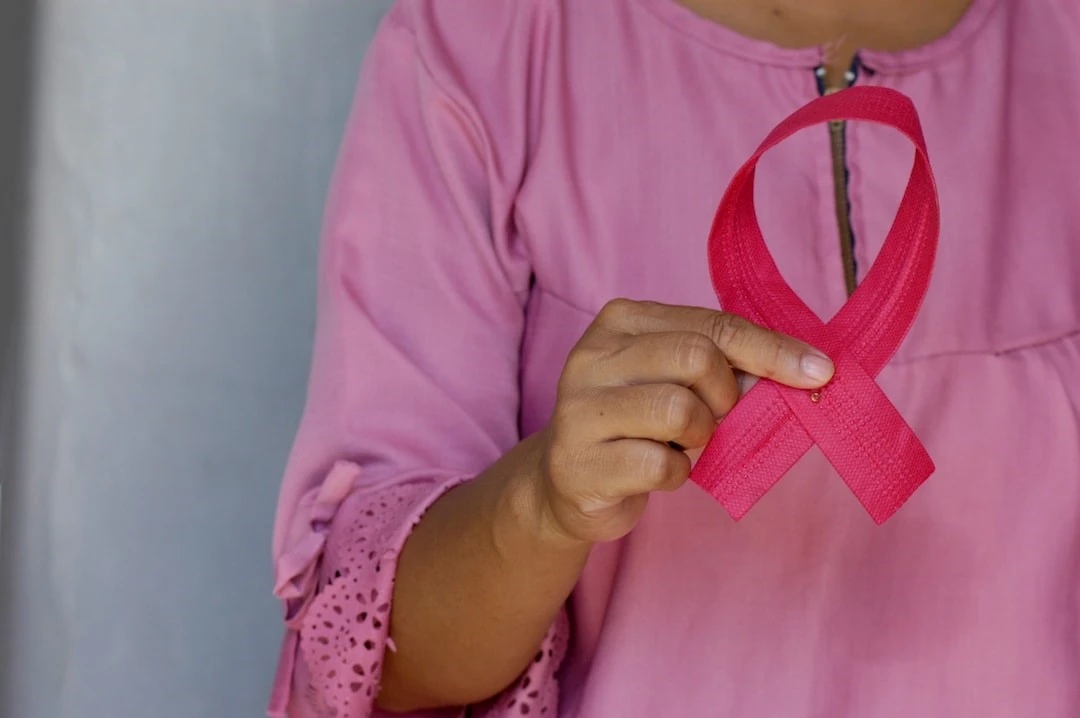
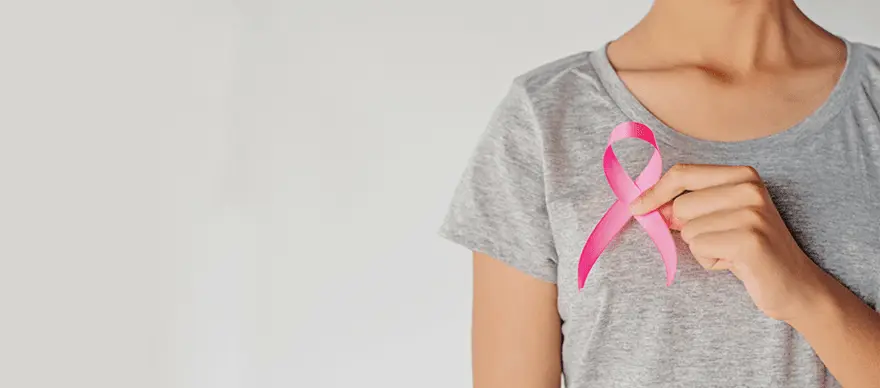
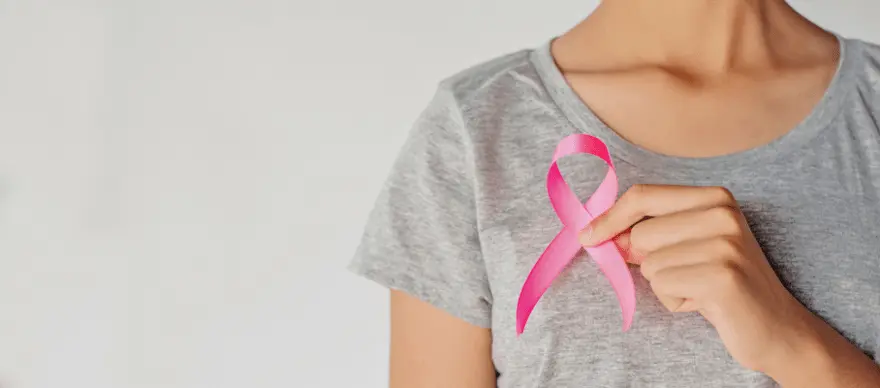
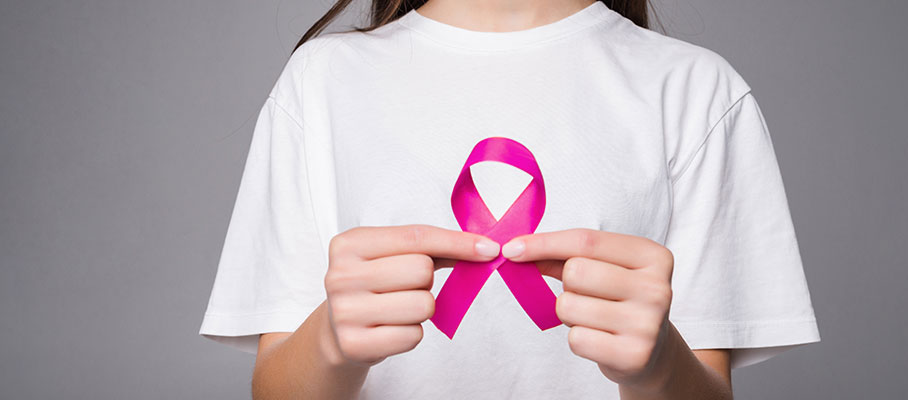
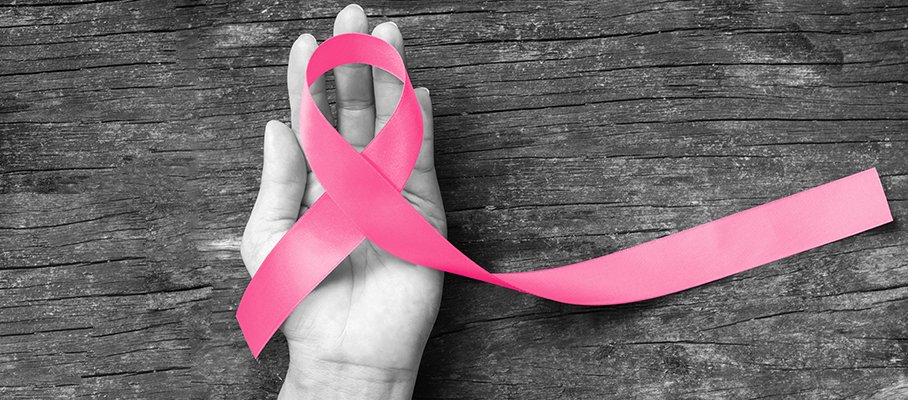








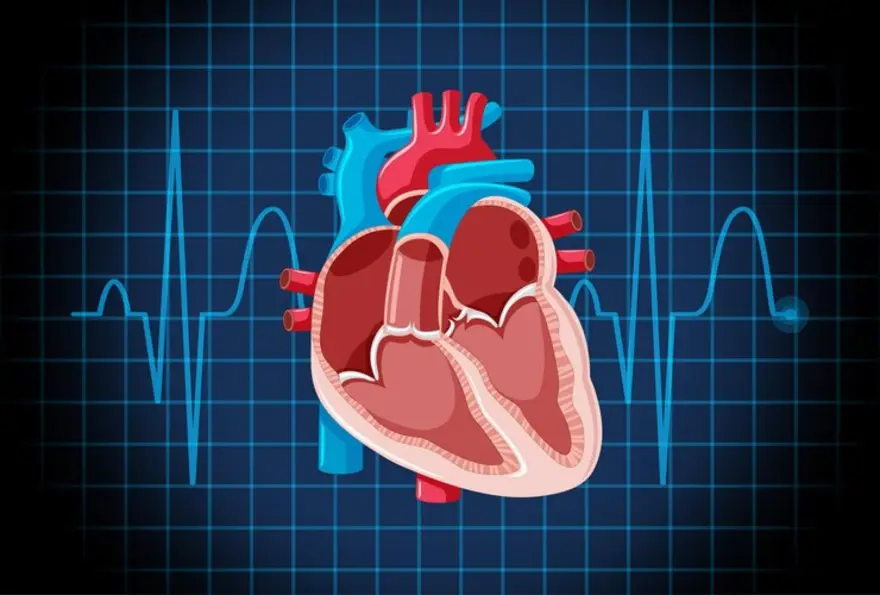

 WhatsApp
WhatsApp